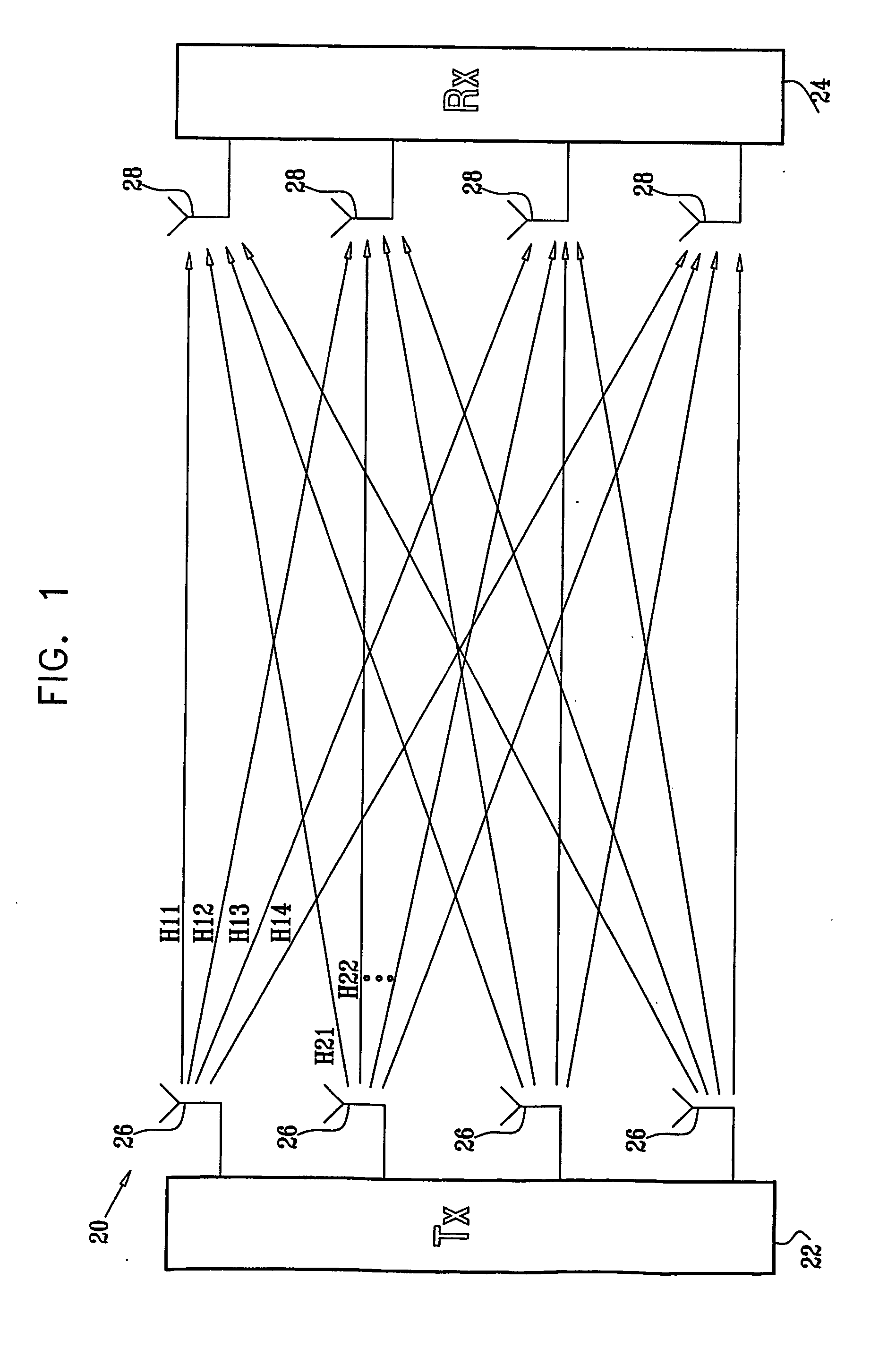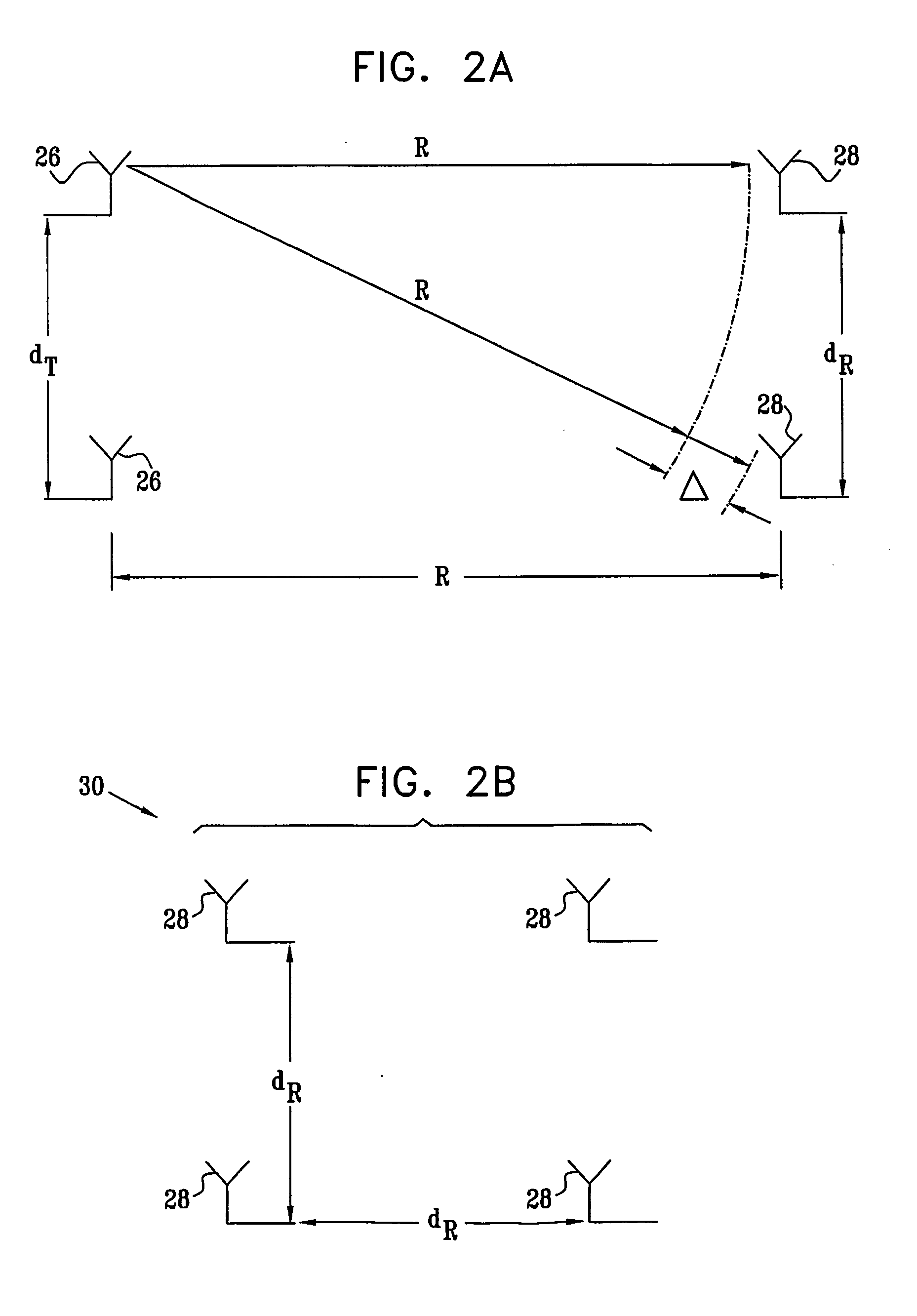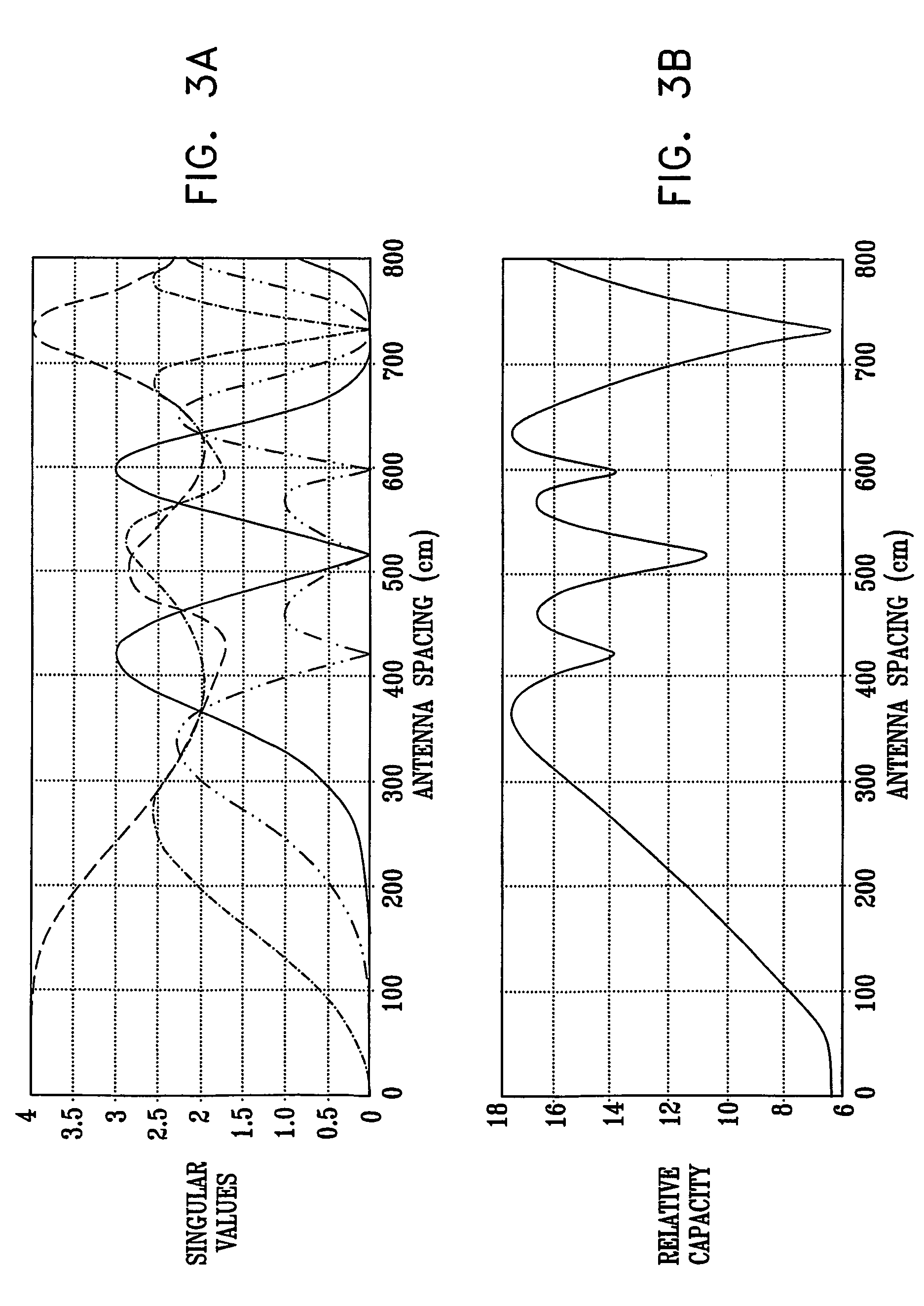Near-field spatial multiplexing
- Summary
- Abstract
- Description
- Claims
- Application Information
AI Technical Summary
Benefits of technology
Problems solved by technology
Method used
Image
Examples
Embodiment Construction
System Overview
[0037]FIG. 1 is a block diagram that schematically illustrates a wireless data transmission system 20, in accordance with a preferred embodiment of the present invention. System 20 comprises a transmitter 22 and a receiver 24, which are connected by a wireless link formed by multiple transmit antennas 26 and receive antennas 28. Each of the receive antennas receives signals from all the transmit antennas, with amplitude and phase determined by a complex channel transfer function matrix H, having elements H11, H12, . . . , as shown in the figure. In other words, the transmitted signal vector x and the received signal vector y (made up of the individual complex signals xi and yj transmitted and received by the different antennas 26 and 28) are related by the expression:
y=Hx+n (1)
Here n represents the noise received at each antenna. Hij is the complex transfer function from transmit antenna i to receive antenna j, and represents generally both amplitude attenuation and...
PUM
 Login to View More
Login to View More Abstract
Description
Claims
Application Information
 Login to View More
Login to View More - R&D
- Intellectual Property
- Life Sciences
- Materials
- Tech Scout
- Unparalleled Data Quality
- Higher Quality Content
- 60% Fewer Hallucinations
Browse by: Latest US Patents, China's latest patents, Technical Efficacy Thesaurus, Application Domain, Technology Topic, Popular Technical Reports.
© 2025 PatSnap. All rights reserved.Legal|Privacy policy|Modern Slavery Act Transparency Statement|Sitemap|About US| Contact US: help@patsnap.com



